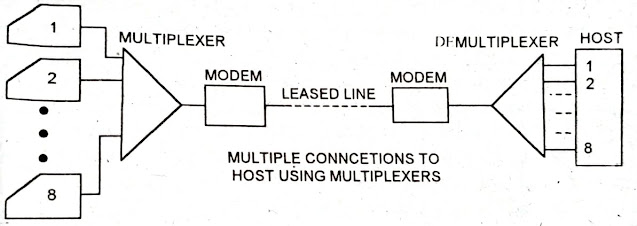Multiplexing and de-multiplexing Multiplexing is a process in which two or more signals are added and one signal is taken out. It has more than one input and a single output.
Therefore, multiplexing is a process in which multiple signals through the same route retain their properties during this process. In this process, a device is used to send all the signals at once, which is called a multiplexer. Therefore, multiplexing is a process in which multiple signals through the same route retain their properties during this process. In this process, a device is used to send all the signals at once, which is called a multiplexer. is called. It is the multiplexer that decides when and how to provide transmission paths to all input signals. The basic signals are then separated by a de-multiplexer at the receiver point.
If many signals are transmitted without multiplexer then various problems occur in transmission and that transmission is difficult. A lot of modems are used in this type of transmission.
But if a multiplexer is used in this type of transmission, then it will work as shown in the picture. In this modem and leased line are used the least, that port of the multiplexer which is connected to the terminal, that port is called terminal port and the port to which the leased line is connected is called line-port. The demultiplexer is already connected inside a multiplexer so that the demultiplexer does not have to be used separately.
 |
Multiplexing and de-multiplexing |
 |
Frequency Division Multiplexing |
 |
Time division multiplexing |
(b) Asynchronous Time Division Multiplexing - Asynchronous time division multiplexing is also called space division multiplexing or statistical time division multiplexing.
(iii) Wave Division Multiplexing (WDM) – WDM works similarly to FDM but in that multiplexing and demultiplexing keep the light-signal transmission which is transmitted through fiber optic cable. Its idea is similar to FDM but Its frequency is very high.
The WDM multiplexer and DI-multiplexer are shown in the figure. Under this, different types of bands are obtained from different sources. this technique It is quite difficult but its concept is very simple.
 |
| web division multiplexing |






0 تعليقات
Please give your suggestions in comments.